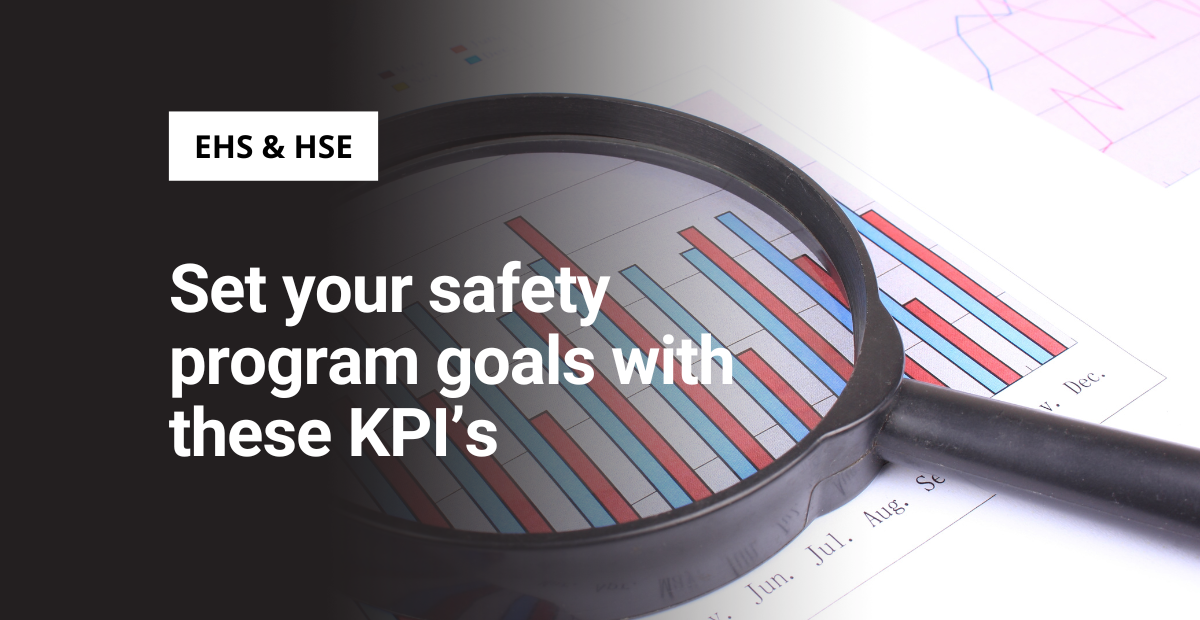Key performance indicators (KPI’s) play an important role in operations management. They provide a benchmark that you can use to decide the success or failure of a goal.
KPI’s can also help you find areas of strength and opportunities for improvement. That goes for all areas of the business—especially the safety department. When setting new goals for worker safety, it’s important to track the right metrics.
It’s often beneficial to use a mixture of leading and lagging indicators for your performance assessments. Below are some of the most important KPI’s that you can use to set your safety program goals and determine success.
Frontline EHS software solutions
Our EHS software makes it easy to track the status of all your action items.
Injury frequency and severity
It’s important to measure not only how often workplace incidents occur, but also the severity of those incidents.
Injury frequency is typically calculated by looking at how many injuries occur in relation to how many hours are worked. Injury severity is determined by comparing the total number of days lost per injury in relation to how many hours are worked.
The Bureau of Labor and Statistics (BLS) publishes data annually on injury frequency and severity in different industries. You can find that data here. Use that data to set your own KPI’s and get a better understanding of how your rates compare to others in the same industry.
Safety audit outcomes
Conducting regular workplace safety audits is a critical part of any safety program. For audits to be effective, however, you need to establish a pass/fail metric.
Without some sort of performance threshold, safety audits will most likely become a relatively useless administrative task. And if you don’t follow up, you can miss out on major cost savings (in addition to the safety benefits).
You might set up an audit checklist that requires all “yes” answers to pass. Or you could also separate audits into different categories according to their severity. Either way, your team should know what constitutes a passing grade and have a standard process in place to address failures.
Rate of near misses
Near misses are events that could have resulted in property damage or serious injury but did not. Although near misses don’t have immediate consequences, they’re a leading indicator of underlying issues that you need to address.
One of your safety program goals should be to reduce the rate of near misses. In order to do this, you’ll first need to start tracking these events. Then, you’ll need to have some sort of pattern recognition or investigation procedure in place to follow up on near misses.
With each occurrence, you’ll have more data you can use to improve your operation. Just make sure to pursue corrective action following near misses, otherwise your observations might not count for much.
Employee perception surveys
Employee perception surveys can reveal many things about your company’s safety culture. They should be created and administered so you can determine how well your employees understand workplace safety. This information, in turn, can help you prevent incidents and create objectives for your safety training program.
Safety training completion and retention
Safety training is one KPI that you can measure in a couple of different ways. And it’s such an easy place to set safety program goals. After all, if your training program isn’t successful, you’ll have a hard time creating an overall safe work environment.
You can set goals with KPIs like:
- Pass/fail rate for safety training
- Long-term knowledge retention test scores
- New hire completion rate
- Frequency of incidents where employees demonstrate a knowledge gap
- Frequency of safety refreshers
Many compliance organizations mandate training for certain topics, which is something that you should include in your safety program KPIs. Performing audits to ensure employees are following safety practices and administering impromptu quizzes are two ways you can measure knowledge retention over time.



